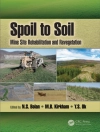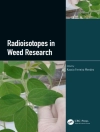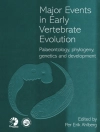More than two thirds of all living organisms described to date belong to the phylum Arthropoda. But their diversity, as measured in terms of species number, is also accompanied by an amazing disparity in terms of body form, developmental processes, and adaptations to every inhabitable place on Earth, from the deepest marine abysses to the earth surface and the air. The Arthropoda also include one of the most fashionable and extensively studied of all model organisms, the fruit-fly, whose name is not only linked forever to Mendelian and population genetics, but has more recently come back to centre stage as one of the most important and more extensively investigated models in developmental genetics. This approach has completely changed our appreciation of some of the most characteristic traits of arthropods as are the origin and evolution of segments, their regional and individual specialization, and the origin and evolution of the appendages. At approximately the same time as developmental genetics was eventually turning into the major agent in the birth of evolutionary developmental biology (evo-devo), molecular phylogenetics was challenging the traditional views on arthropod phylogeny, including the relationships among the four major groups: insects, crustaceans, myriapods, and chelicerates. In the meantime, palaeontology was revealing an amazing number of extinct forms that on the one side have contributed to a radical revisitation of arthropod phylogeny, but on the other have provided evidence of a previously unexpected disparity of arthropod and arthropod-like forms that often challenge a clear-cut delimitation of the phylum.
Tabela de Conteúdo
Introduction to Diversity and Ubiquity of Arthropods.- The Arthropoda: A Phylogenetic Framework.- Evolutionary Genomics of Arthropods.- Arthropod Embryonic Development.- Arthropod Post-embryonic Development.- Arthropod Developmental Endocrinology.- Arthropod Regeneration.- The Arthropod Cuticle.- Arthropod Body Segments and Tagmata.- The Arthropod Head.- Arthropod Appendages.- Insect Wings: The Evolutionary Development of Nature’s First Flyers.- The Arthropod Nervous System.- The Arthropod Circulatory System.- The Arthropod Fossil Record.- Arthropods: Water-to-Land Transitions.- Arthropod Endosymbiosis and Evolution.- The Evolvability of Arthropod Structure.












